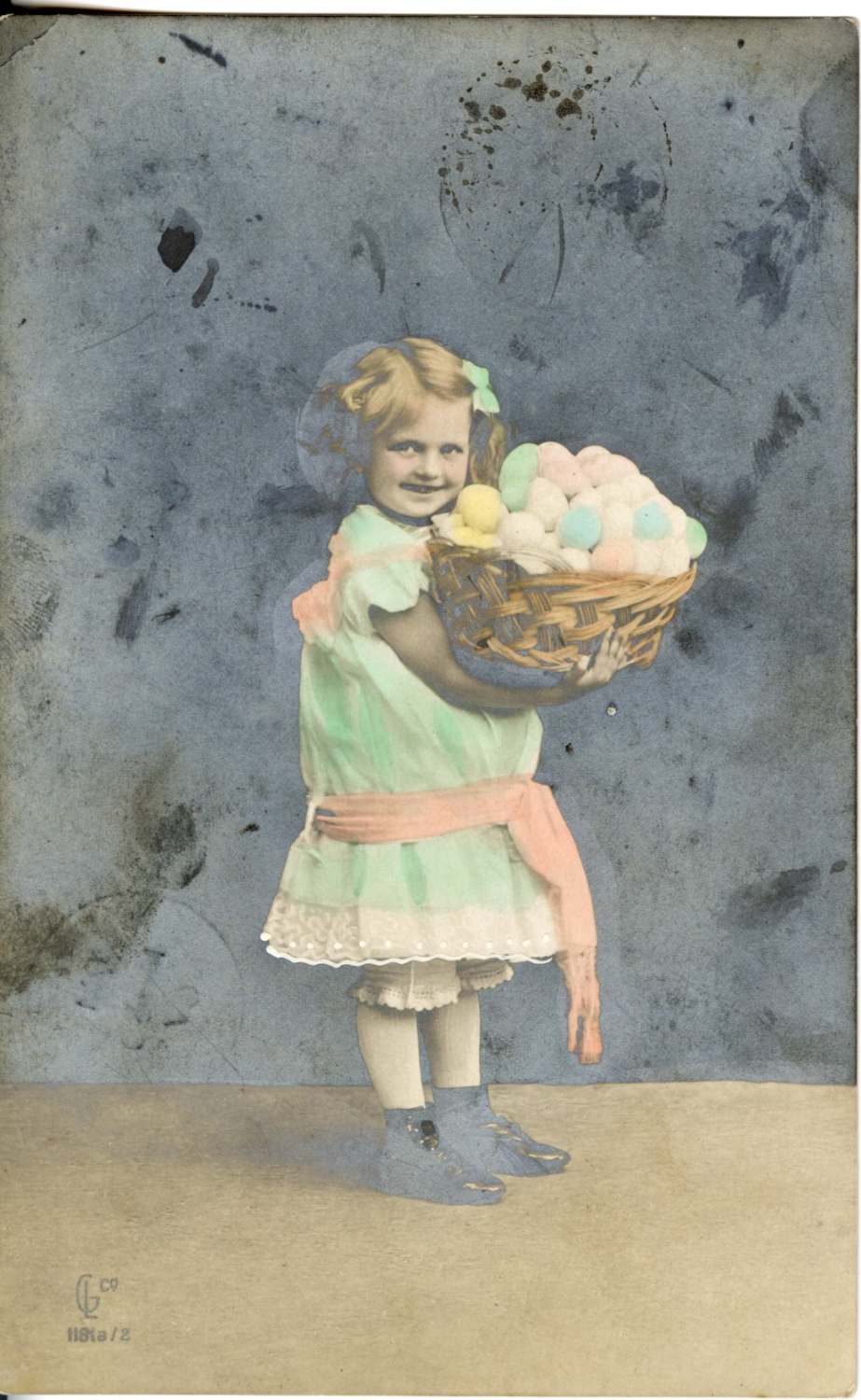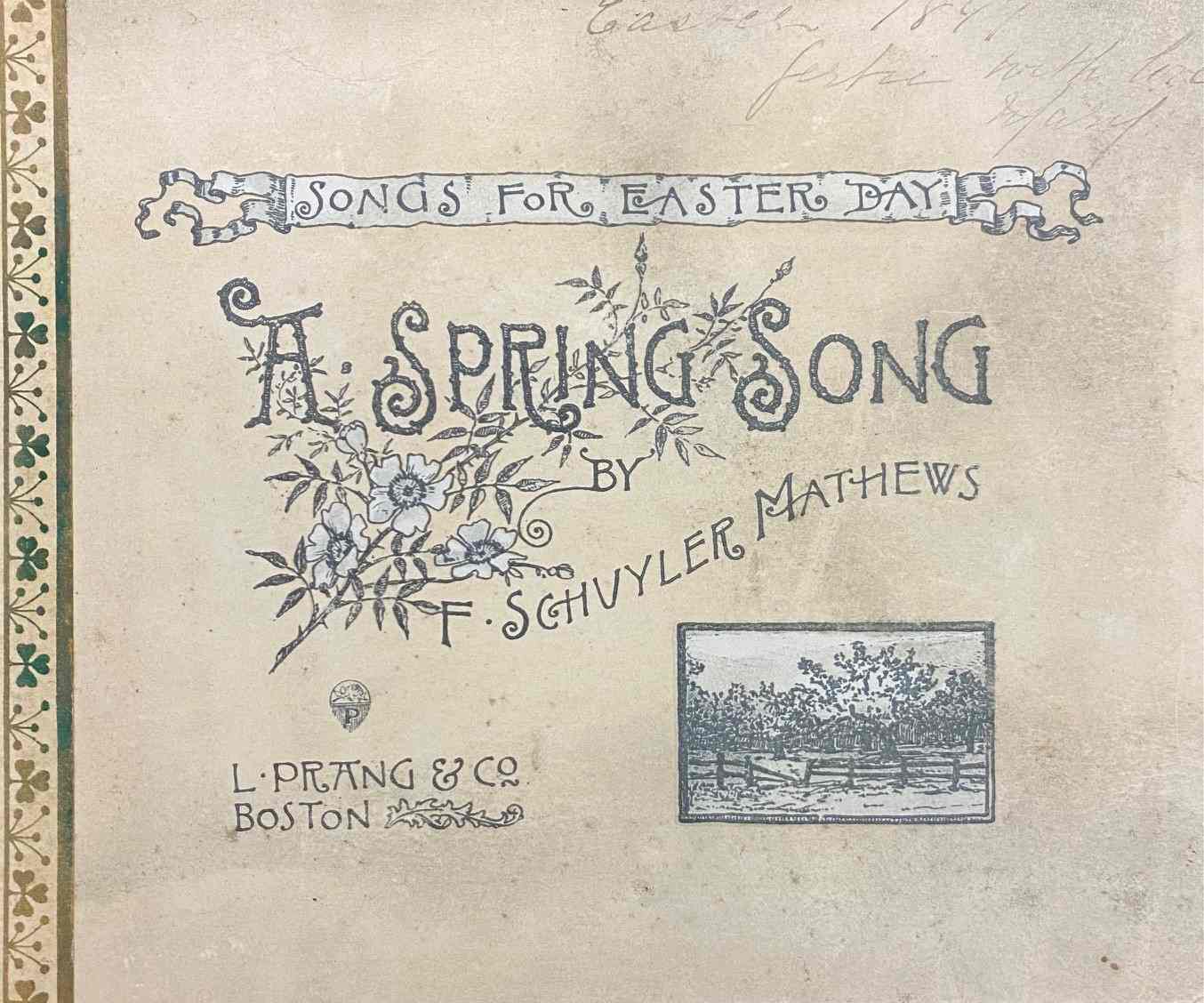Easter in the Kitchen
Easter in the Kitchen
What types of food were people eating and making for Easter in the 1910s and 20s? Read on to find out!
By Liz Dommasch, Archivist
Like many holidays, Easter is often associated with certain types of food, many of which are fondly remembered as part of childhoods and family get-togethers. Let’s take a look at some historic recipes, compiled from the Archives' cookbook collection that can help round out your Easter meal this year!
Stewed Lamb
Put lamb in a frying pan with a tablespoon of butter and onion cut fine. Cook for a minute. Season with salt and pepper and parsley. Cover with water and cook for 2 ½ hours. Put some potatoes in a short time before the lamb is done.
Moffatts Cookbook for Moffat Rangers. – 1926.
Broiled Ham
Cut the ham into slices one-half inch thick, place on a hot gridiron and broil till slightly brown; take from the gridiron and drop into a pan of cold water, then return again to the iron and repeat four times. Place on a hot platter, spread with butter, and serve.
W.A. Karn’s Drug Store. The Art of Cooking Made Easy. Woodstock, Ontario, ca. 1910
Mint Glazed Carrots with Peas
Wash, scrape, and cut three medium-sized carrots in one-fourth-inch slices, then in strips or fancy shapes, using French vegetable cutters. Cook in boiling, salted water for fifteen minutes, and drain. Put in a saucepan with one-half cup butter, one-half cup sugar, and one tablespoon chopped fresh mint leaves. Cook slowly until soft and glazed. Drain and rinse thoroughly one can of French peas. Cook for ten minutes in boiling water to cover, drain, and season with butter, salt, and pepper. Turn peas on a hot serving dish and surround with carrots.
Fannie Merritt Farmer. The Boston Cooking School Cook Book. - 1928,
Boiled Eggs – Perfection
Have the water boiling, take off the stove, and set in a warm place (the stove hearth will answer); put in the eggs and cover the vessel closely; let them simmer for nine minutes; they are then cooked evenly and well. – Mrs. Starkweather
W.A. Karn’s Drug Store. The Art of Cooking Made Easy. Woodstock, Ontario, ca. 1910
Egg Salad
12 hard-boiled eggs, ½ pint cream, butter size of an egg, parsley chopped fine, one tablespoon flour. Take cream, butter, parsley, and flour. Mix and cook until thick. Slice eggs and after each layer of eggs add one bread crumbs over which pour cream to cover. When the dish is full bake until brown. Garnish and serve hot. – Mrs. P.S. Connolley
St. Mary’s Church. Woodstock Cook Book. – 1917.
Hot Cross Buns
Mix together 2 tablespoons butter, and ¼ cup sugar, and add ½ teaspoon salt to 1 cup of scalded milk. When lukewarm add to ½ yeast cake dissolved in ½ cup of like warm water, 3 cups flour, ¾ teaspoon cinnamon, 1 egg well beaten. Mix well and add ¼ cup of raisins and ¼ cup of currants. Let rise overnight. In the morning shape in form of biscuits and let rise again. Brush with beaten egg. When frosting make a cross on each bun. Put in oven at 450 degrees, turn top off, bottom on low. Time about 15 to 20 minutes
Moffatts Cookbook for Moffat Rangers. – 1926.
Milk Chocolate Candy
2 cups granulated sugar, 1 cup milk, 1 heaping teaspoon butter, 1 small teaspoon vanilla, and 1-ounce chocolate. Mix sugar and milk until there are no lumps then place it on the fire, put butter in, stirring continually. When it comes to a boil, add chocolate, and allow to boil until it forms a soft ball when dropped in cold water, add vanilla and nuts if desired, and put away to cool. When cold and hard as taffy stir with a heavy spoon (this requires muscle). When soft enough to pour out, spread on butter plates and put away to harden. – Esther Kupfter.
St. Mary’s Church. Woodstock Cook Book. – 1917.
As COVID restrictions begin to ease, Easter this year may look a lot different from the last few years. How has your family celebrated the holiday over the pandemic? The Archives is interested in capturing oral histories from the public about people’s experiences during COVID. Please contact the Archives at archives@oxfordcounty.ca if you are interested in getting involved.
Happy Easter!!!

